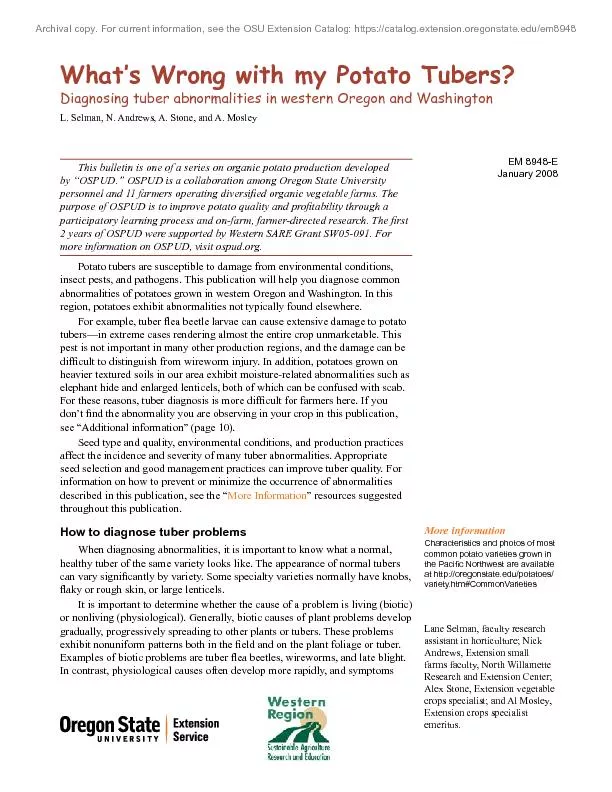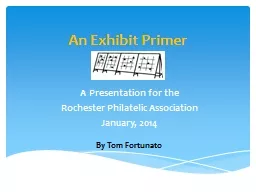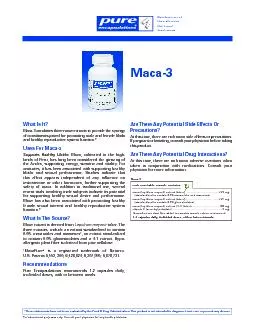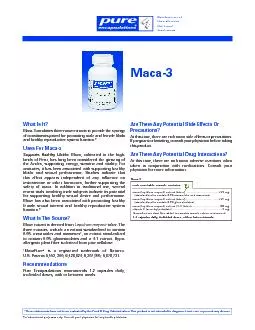PDF-exhibit more uniform patterns. Examples of physiological tuber problem
Author : olivia-moreira | Published Date : 2016-08-16
2 Diagnosis of plant problems during the season provides some insight into likely causes of tuber damage For damage monitoring diagnostics and recordkeeping can
Presentation Embed Code
Download Presentation
Download Presentation The PPT/PDF document "exhibit more uniform patterns. Examples ..." is the property of its rightful owner. Permission is granted to download and print the materials on this website for personal, non-commercial use only, and to display it on your personal computer provided you do not modify the materials and that you retain all copyright notices contained in the materials. By downloading content from our website, you accept the terms of this agreement.
exhibit more uniform patterns. Examples of physiological tuber problem: Transcript
Download Rules Of Document
"exhibit more uniform patterns. Examples of physiological tuber problem"The content belongs to its owner. You may download and print it for personal use, without modification, and keep all copyright notices. By downloading, you agree to these terms.
Related Documents














